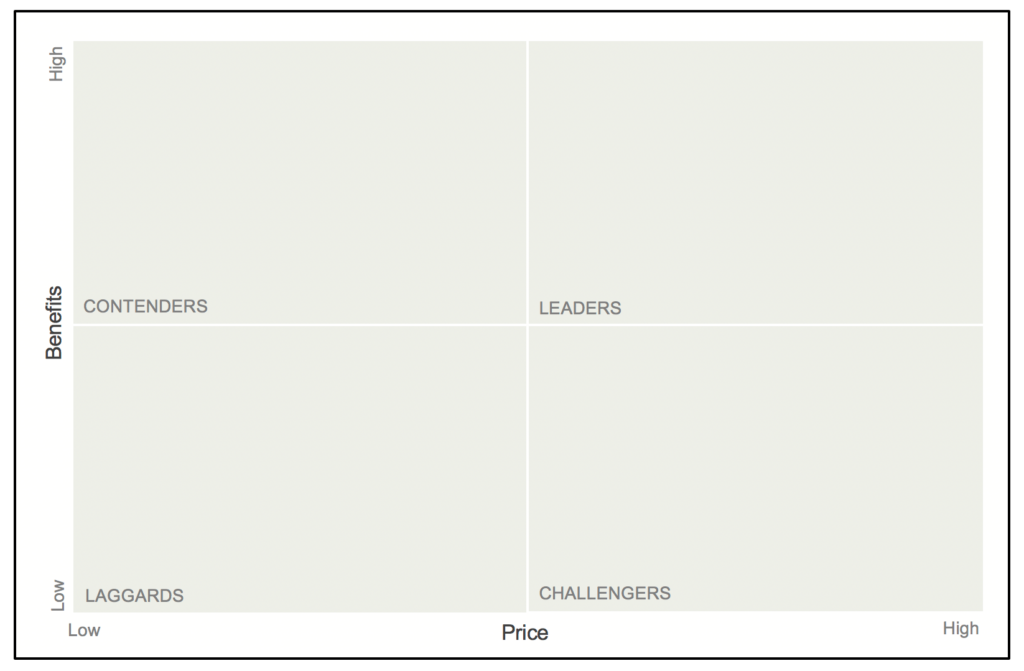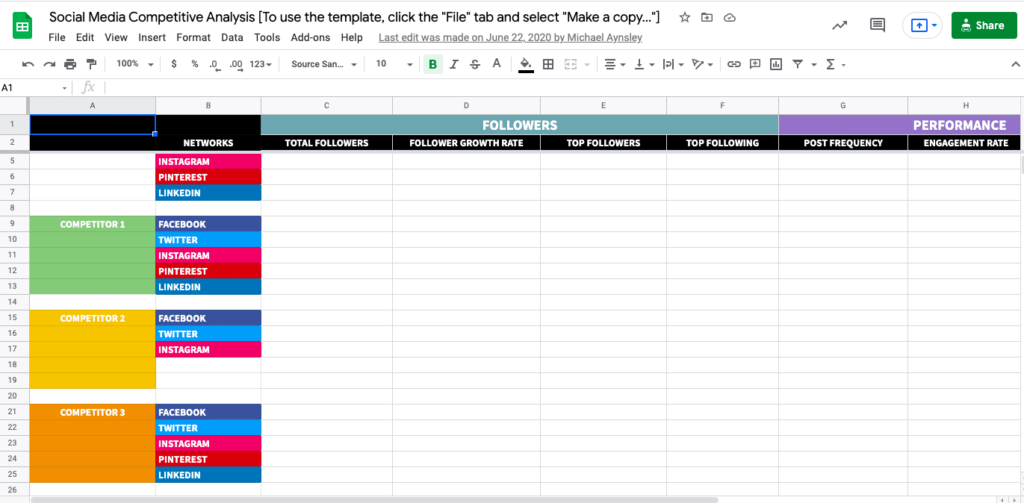How to Crush Your Competitors and Become the Leader in Your Industry
What is a Competitive Analysis?

A competitive analysis is like doing detective work on your business rivals. It’s about understanding who your competitors are, what they’re doing, and how you can do better than them.
Basically, it’s a strategy where you identify your main competitors and research their products, sales, and marketing strategies. This helps you figure out what they’re doing right or wrong and how you can strengthen your business by learning from their successes or mistakes. For example, you could compare things like their prices, how they advertise, who their customers are, and any new ideas or changes they’re introducing.
By doing a competitive analysis, you better understand your market and learn how to stand out from the crowd. It can help you discover opportunities and threats within your industry and develop new strategies to improve your own business.
Why does making a competitive analysis help you succeed?
Undertaking a competitive analysis is an effective strategy for staying aware of your competitors’ activities. Even though it’s not possible to monitor every competitor (because the reality is that new ones emerge daily attempting to disrupt your business), awareness of potential threats is essential for survival. The optimal course of action is to learn from the outcomes of competitive analysis and focus on delivering superior service to the most important people – your customers. Here are some reasons why performing a competitive analysis is beneficial:
- Identifying Strengths and Weaknesses: It helps you recognize your strengths and weaknesses. You also gain insight into your competitors’ strengths and weaknesses, allowing you to fortify your business strategy.
- Defining Your Value Proposition: Every business must understand its unique value proposition – what makes you different from your competitors?
- Identifying Your Best Product: The product with the greatest potential to drive your success needs to be clearly understood. You need to know how this product addresses customer needs, why your offer is superior to your competitors, and what makes customers choose you over the competition.
- Understanding Customer Needs: Many businesses overlook the importance of centering their focus on clients. Competitor analysis can help identify areas where customers are underserved.
- Spotting New Opportunities: These “gaps” represent unexploited business opportunities that you can leverage.
- Learning from Competitor Shortcomings: Competitor analysis helps you identify which areas of customer service your competitor is faltering in. Use this information to improve your own customer service, enhancing customer loyalty.
- Tracking Growth: Competitor analysis shows how your competitors have grown over time, offering a roadmap to enhance your own strategies.
- Identifying New Market Trends: Staying current with market trends is crucial to meeting customers’ evolving needs.
- Developing Effective Strategies: Competitor analysis aids in developing strategies for increasing sales, generating leads, and attracting new customers.
- Defining Your Go-to-Market Strategy: Before launching into the market, you need a comprehensive understanding of your customers, competitors, product value proposition, pricing, and other dynamics. Competitive analysis helps you comprehend these aspects and devise strategies to manage and optimize them.
How to Achieve Competitive Advantage?
One highly recommended resource to understand how to achieve a competitive advantage is “Competitive Strategy: Techniques for Analyzing Industries and Competitors” by Michael E. Porter. The main objective of this book is to elucidate how certain factors can help a business attain a competitive advantage. Such an advantage stems from the profitability of a company’s industry and its competitive position within that industry. In essence, your competitive advantage is influenced by your industry and your competitiveness within it.
Consider, for example, that your business is in the makeup industry. Your competitive advantage would then be determined by your relative position within the industry and against competitors.
The method for analyzing profitable industries often employed is Porter’s Five Forces, which includes:
- Industry Competition: The primary purpose of the Five Forces is to understand a business’s competitive landscape. You can assess competition through factors such as the number of competitors, product diversity, market demand, emerging markets, and market share. Rivalry is crucial because a business can thrive in both price and performance competition.
Price competition is the battle between businesses to offer lower prices while enhancing their value chain (through Value Chain Analysis or VCA, a company identifies its main activities that add value to its final product, aiming to reduce costs or increase differentiation).
Performance competition focuses on providing superior services and product quality.
- The Potential of New Entrants into the Industry: A business that effectively erects entry barriers for potential competitors will have a higher competitive edge. Conversely, all businesses are threatened by new entrants, which can disrupt established economies and competitiveness. For a business to maintain high entry barriers, it must offer a unique differentiator that’s hard to replicate.
- Bargaining Power of Suppliers: If there are few suppliers for key input elements, those suppliers can increase the prices of their goods. Suppliers’ power comes from having little or no competition, which can provide other trading advantages.
- Bargaining Power of Buyers: The more influential the buyer, the greater their bargaining power with suppliers. The number of buyers can influence prices and competition among businesses. Buyers often favor companies that align with their beliefs and values.
- The threat of Substitute Products: Businesses with unique products or services that are hard to substitute have a competitive edge. The easier a product can be replaced, the faster it will lose its advantage. If a product can be easily copied, it invites comparison and gives customers more choices, diminishing a business’s power.

How to Conduct a Competitive Analysis?
Define your competitors
Define the competitor’s products
Research the competitor’s sales strategies and outcomes.
Make a price comparison: verify your prices are competitive.
Research shipping costs
Analyze marketing strategies
Research competitor’s content: it helps you with keyword marketing strategies and communicates with your customers better than the competition.
Analyze competitor’s technology
Learn about their social media engagement
Do a SWOT analysis
Which competitive analysis is best for you?
Competitive Landscape: use to see your competition in a single view regarding how they relate to each other.

Competitor Profile: good to build a detailed profile of each competitor. They are used to captive information about their organization, customers, and products.
It helps provide business departments with a great understanding of the competitor’s advances.


Competitor Scorecard Template: used to rank the competitors and measure threads. It uses scoring metrics to analyze the competition. It has multiple uses to analyze market awareness, rank product attributes, or rank customers’ perspectives.

Competitor Overview: compare numerous competitors at once. This template helps you to analyze their products, market details, and go-to-market strategies. It is a great way to collect and analyze critical data.

Capability Analysis Template: help you compare your products and team to the competitors. Use to analyze collective skills, abilities, expertise and to see where the company is standing and how to improve it.

Features Analysis Template: like stated in the name, it helps to analyze the features of each product. Once you have the analysis, then you can make a better decision regarding offerings. It also enables you to define your product’s unique value proposition.

Imitability Ladder Template: helps to understand the uniqueness of your business and its advantages. Also, help you define the weaknesses of the company.

Competitive Differentiation Analysis Template: It facilitates you to define a product strategy that will help set apart your business. It is perfect for identifying all the potential benefits of your product. This clarifies where you need to add value to your solution to create customer delight and a lasting competitive advantage.

Conclusion
Achieving a competitive advantage in today’s dynamic marketplace involves strategic planning and a deep understanding of both your business and the competitive landscape. Utilizing tools like Porter’s Five Forces can provide critical insights into industry competition, the potential of new entrants, supplier and buyer power, and the threat of substitute products. Each force requires careful consideration and unique strategies to ensure you maintain a strong position within your industry. As a business, the goal should always be to offer something distinctive that is difficult for others to replicate. Remember, maintaining a competitive advantage is not a one-time effort; it requires continuous analysis, adaptation, and improvement in response to evolving market trends and competition. Your competitive advantage will be the cornerstone of your success, helping you stand out and thrive in your chosen industry.


